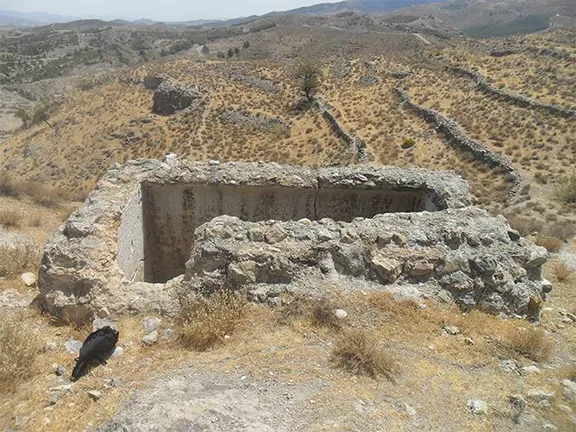Tijola known as the Pearl of Almanzora or Granada la Chica, the oldest fortress in the Almanzora, Almeria province, Andalucia
By Nick Nutter | Updated 5 Mar 2022 | Almería | Villages |
Login to add to YOUR Favourites or Read Later


Estacion Tijola
During the Roman period, Tagilis was known as a ‘recreational centre’. Throughout the Moorish occupation, Tixola was called ‘the hidden one’ and from the 19th century, Tijola as it became, has been called the ‘Granada la Chica’ and the ‘Pearl of Almanzora’. It was past time to go there and see what has made this small town so popular.


Ayuntamiento Tijola
The first clue to Tijola’s past glory is actually found in the National Archaeological Museum in Madrid. The ‘Idol of Tijola’, dating back to the 4th millennium BC, was found in Dolmen de Tijola in the Muela del Ajo by the parish priest in the late 1920s. It is a soapstone idol, 15cm high with a large rectangular head supported by a wide neck with two arms hanging from the shoulders. Small busts and a gown, indicate the idol was probably meant to represent a female. It is quite unique.


Iglesia Santa Maria
Over two thousand years later, the Carthaginians founded a significant settlement to exploit the copper and iron deposits in the surrounding hills. The Romans arrived and, apparently liked the area, because they built a number of villas around what was by now an ancient settlement that is today called Tíjola la Vieja above the present town and to the west. Tagili or Tagilis became known as a ‘recreational centre’, partly due no doubt to the presence of the warm baths nearby at Balsa de Cela, funded in perpetuity by a Roman aristocratic lady, Voconia Avita an inhabitant of one of the villas.


the 'Idol of Tijola'
During the 8th century Abderraman I built the fortress Tachola on Tíjola la Vieja. By the 10th century, Tachola had been expanded by Abderraman III to include a fortified town known as Tajela but shown on maps of the Kingdom of Granada as Texora. The medina and fortress are the oldest in the Almanzora and encompass four hills overlooking the Bayarque river and Tijola itself. The fortress was surrendered to Christian forces in 1489.


Tijola le Vieja
During the War of the Alpujarras, 1568 – 1570, Tixola was conquered by Don Juan de Austria, with the help of twelve cannon. The Morisco inhabitants fled and Don Juan killed the warden of the fortress. The town was eventually resettled with people from Navarra.
The agricultural land in the valley of the Rio Almanzora sustained the people of the village. In the 19th century, iron deposits in the hills nearby brought some prosperity to the town and the railway arrived, passing down the valley just north of the town. A small community grew up around Estacion de Tijola.
Today Tijola is a very pleasant town that concentrates on rural tourism. It is an excellent place to stay to take advantage of the fantastic scenery in the Sierra de los Filabres and the Sierra de las Estancias.